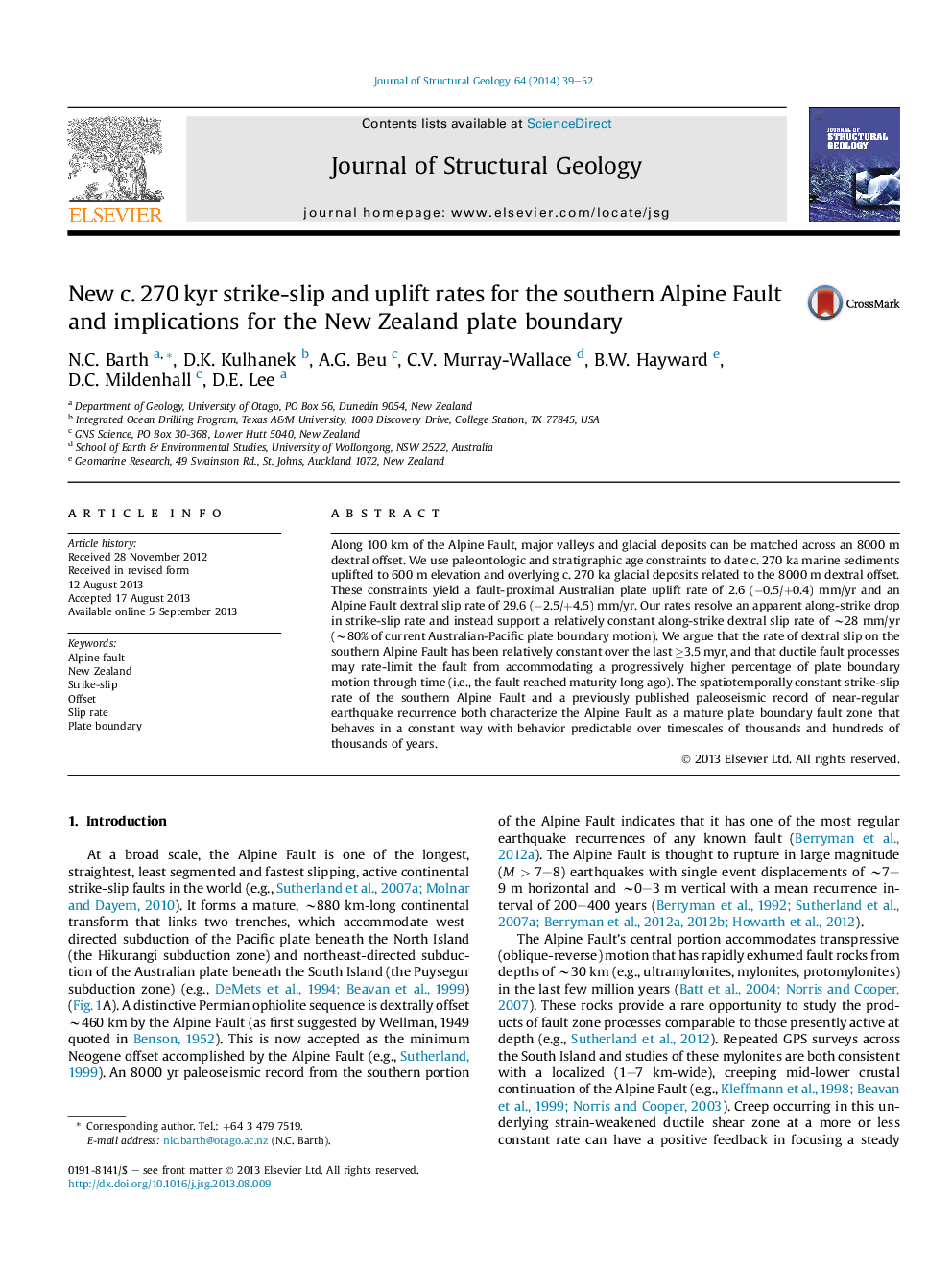| Article ID | Journal | Published Year | Pages | File Type |
|---|---|---|---|---|
| 4733156 | Journal of Structural Geology | 2014 | 14 Pages |
•We identify an 8 km dextral offset along 100 km of the southern Alpine Fault, N.Z.•The southern Alpine Fault has accommodated 8 km of dextral slip since c. 270 ka.•Our data supports an along-strike dextral-slip rate of c. 28 mm/yr.•We argue for a constant dextral-slip rate on the Alpine Fault since ≥3.5 Ma.
Along 100 km of the Alpine Fault, major valleys and glacial deposits can be matched across an 8000 m dextral offset. We use paleontologic and stratigraphic age constraints to date c. 270 ka marine sediments uplifted to 600 m elevation and overlying c. 270 ka glacial deposits related to the 8000 m dextral offset. These constraints yield a fault-proximal Australian plate uplift rate of 2.6 (−0.5/+0.4) mm/yr and an Alpine Fault dextral slip rate of 29.6 (−2.5/+4.5) mm/yr. Our rates resolve an apparent along-strike drop in strike-slip rate and instead support a relatively constant along-strike dextral slip rate of ∼28 mm/yr (∼80% of current Australian-Pacific plate boundary motion). We argue that the rate of dextral slip on the southern Alpine Fault has been relatively constant over the last ≥3.5 myr, and that ductile fault processes may rate-limit the fault from accommodating a progressively higher percentage of plate boundary motion through time (i.e., the fault reached maturity long ago). The spatiotemporally constant strike-slip rate of the southern Alpine Fault and a previously published paleoseismic record of near-regular earthquake recurrence both characterize the Alpine Fault as a mature plate boundary fault zone that behaves in a constant way with behavior predictable over timescales of thousands and hundreds of thousands of years.
